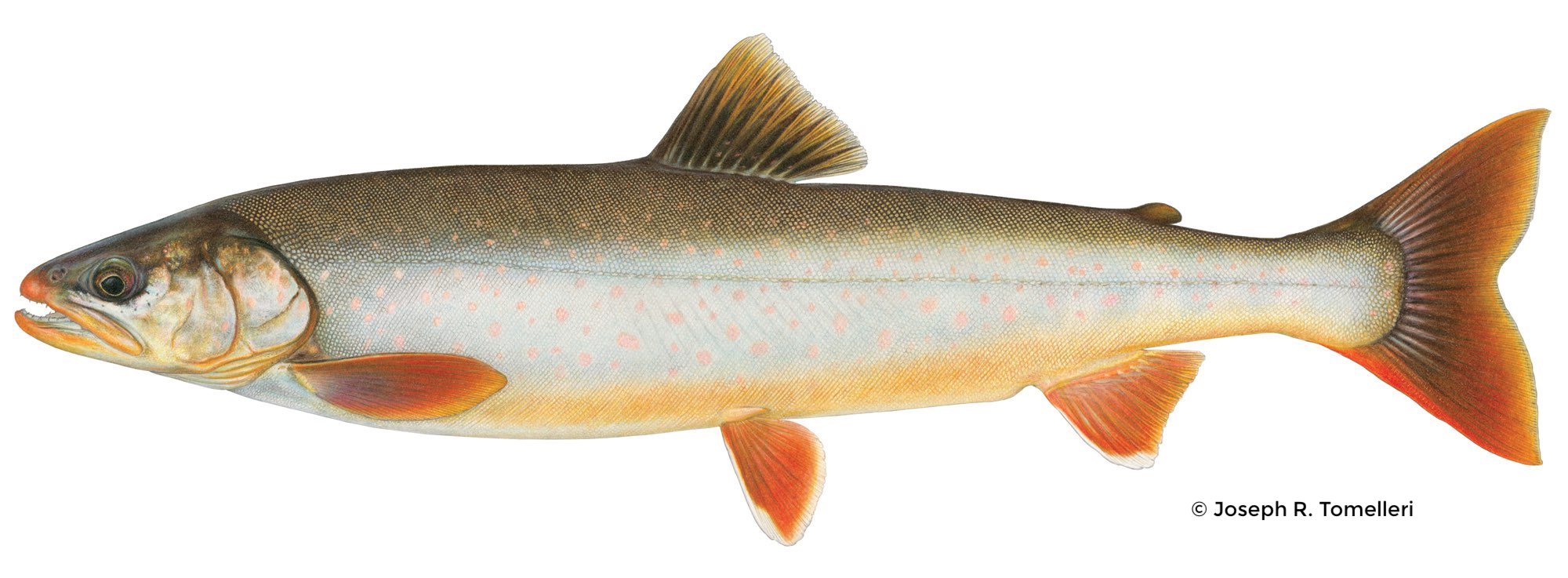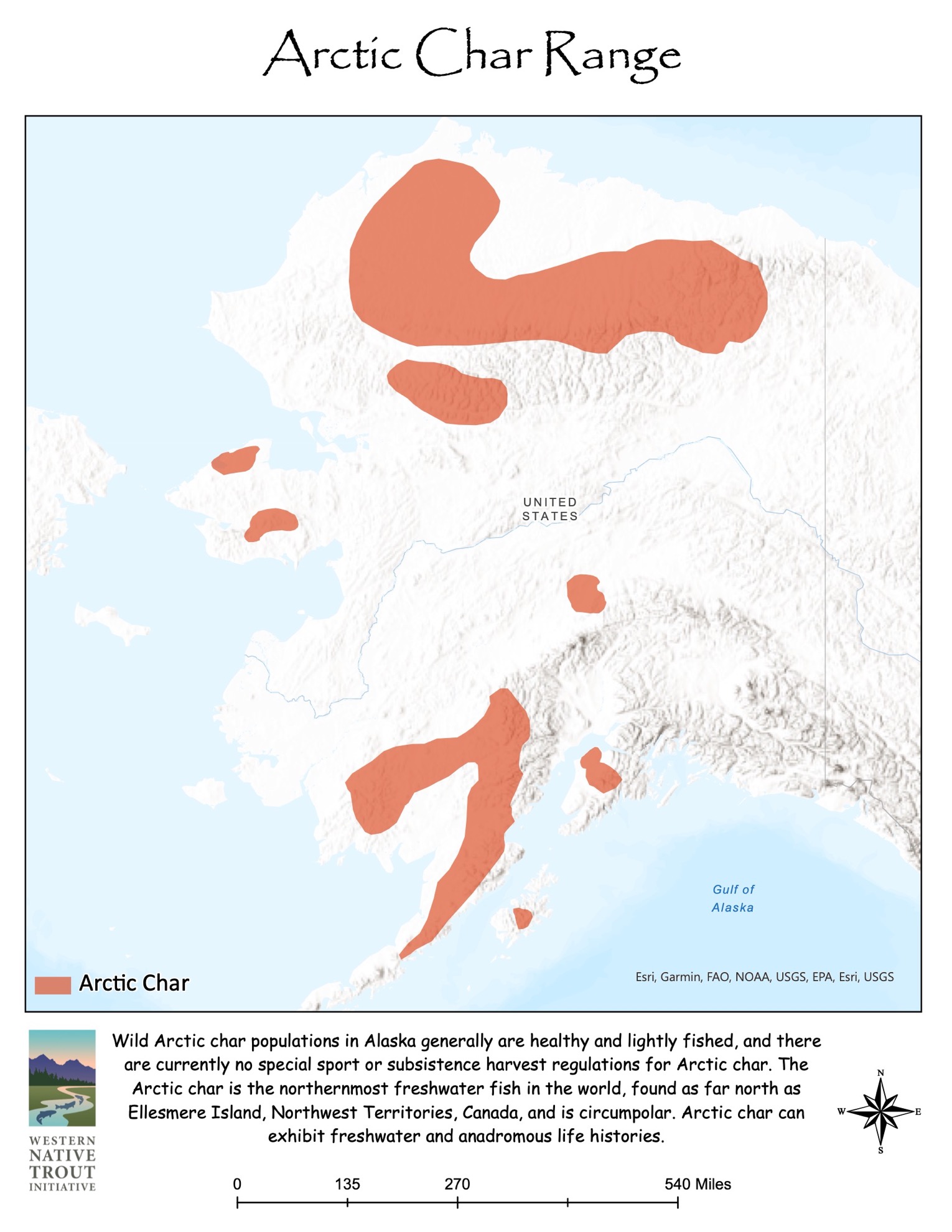
The Arctic Char is the northernmost freshwater fish in the world, found as far north as Ellesmere Island, Northwest Territories, Canada (82°N) (Babaluk et al. 1997). It is circumpolar in distribution and can exhibit both anadromous and strictly freshwater life history patterns (Halden et al. 1995; Babaluk et al. 1997). Arctic Char have been documented in lakes and outlet streams in the Brooks Range, the Kigluaik Mountains, the Kuskokwim Mountains, the Alaska Peninsula, the Kenai Peninsula, Kodiak Island, and in a small area of Interior Alaska near Denali National Park and Preserve. However, a comprehensive survey of Alaska water bodies that contain Arctic Char is lacking. The vast majority of lakes and rivers where they have been surveyed and found are within Federal lands such as the National Petroleum Reserve-Alaska, Arctic National Wildlife Refuge, Gates of the Arctic National Park, Noatak National Preserve, Togiak National Wildlife Refuge, and others (Figure 1). Most populations of Arctic Char are well off the road system. Throughout most of their potential range, basic population-based information such as presence, life history, trophic morphology, genetic variability, abundance, and growth is largely unknown. Arctic Char are caught in both sport and subsistence fisheries in Alaska, however detailed harvest and catch estimates for each fishery are generally unavailable or, when available, are often unreliable. Most subsistence fisheries for non-salmon species are unregulated with no harvest reporting requirements, and because Arctic Char look very similar to Dolly Varden Salvelinus malma, the two species are combined for the purposes of sport harvest reporting and regulations. In general, the majority of Arctic Char populations are found on protected Federal lands off the road system, and fishing pressure is believed to be light in most areas.

